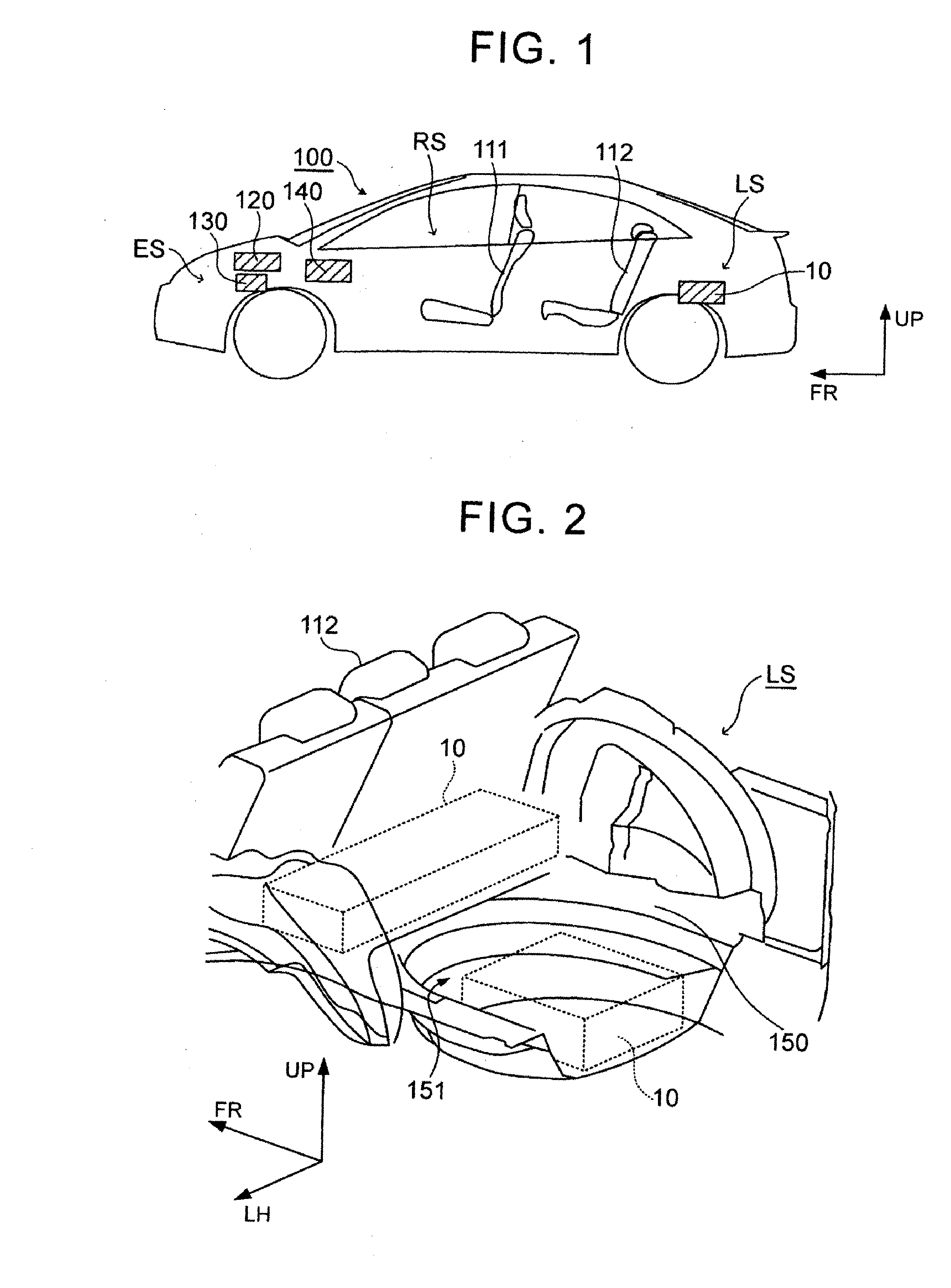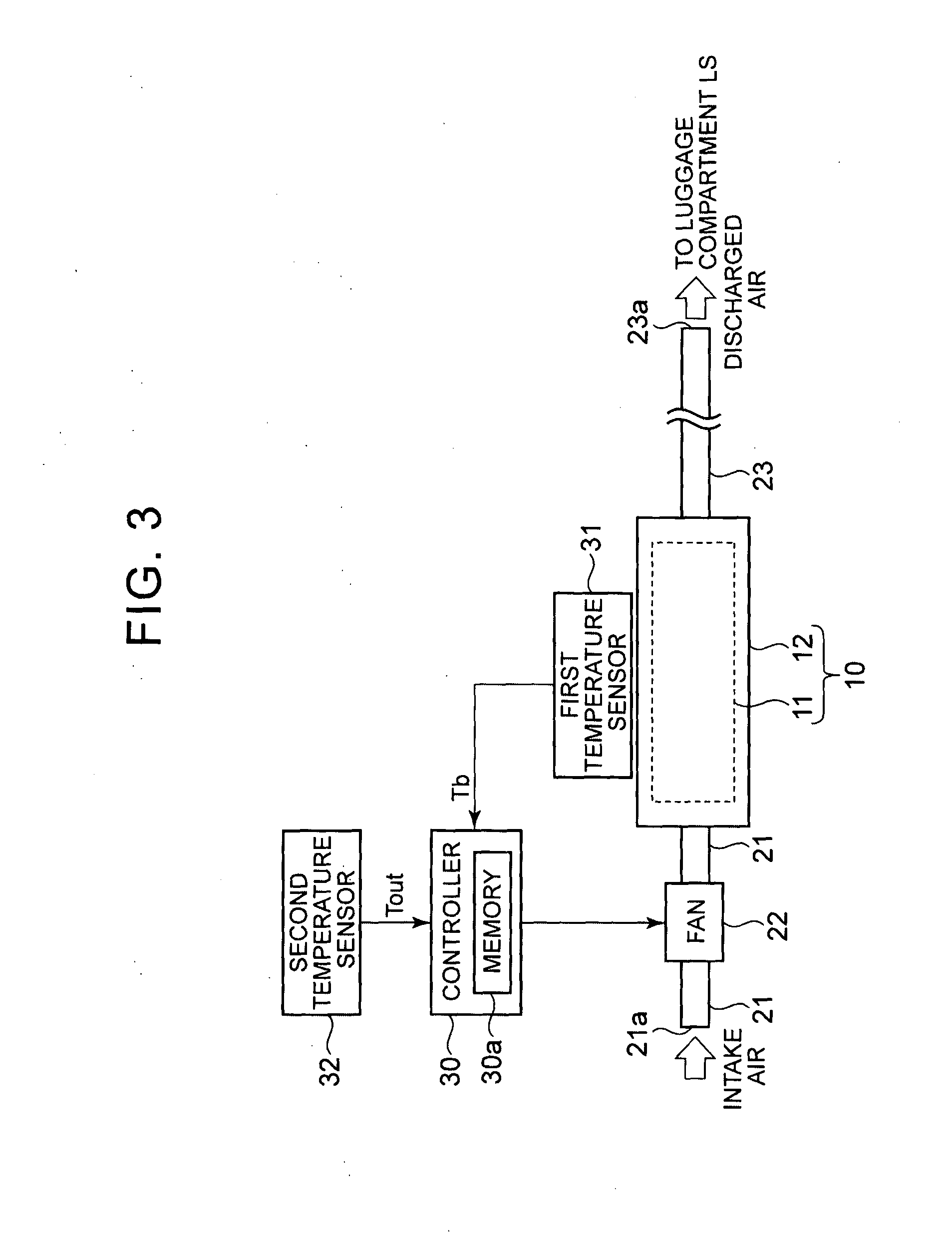Vehicle comprising an electrical storage device cooled by a fan
a technology of electrical storage device and passenger compartment, which is applied in the direction of battery/fuel cell control arrangement, transportation and packaging, etc., can solve the problem of passenger compartment strangeness and reduce the air quantity of the fan, and achieve the effect of easy suppression of air flow
- Summary
- Abstract
- Description
- Claims
- Application Information
AI Technical Summary
Benefits of technology
Problems solved by technology
Method used
Image
Examples
first embodiment
[0044]A vehicle will be described with reference to FIG. 1 and FIG. 2. FIG. 1 is a schematic view that shows the configuration of the vehicle. FIG. 2 is a schematic view that shows the configuration of part of the vehicle. In FIG. 1 and FIG. 2, the arrow FR indicates a direction in which the vehicle 100 travels forward, and the arrow UP indicates an upward direction of the vehicle 100. In FIG. 2, the arrow LH indicates a leftward direction when oriented in the forward direction FR of the vehicle 100.
[0045]The vehicle 100 includes a passenger compartment RS, a luggage compartment LS and an engine compartment ES. The passenger compartment RS is a space in which a passenger is seated. Seats 111, 112 are arranged in the passenger compartment RS. The passenger compartment RS and the engine compartment ES are partitioned from each other by a dashboard provided in the vehicle 100.
[0046]The luggage compartment LS is a space in which a luggage, or the like, is arranged. The luggage compartm...
second embodiment
[0144]The temperature difference ΔT may be calculated as in the case of the Specifically, the temperature set in the air-conditioning system 140 may be treated as the temperature of the passenger compartment RS. The outside air temperature Tout may be treated as the temperature of the spaces S1, S2, S3. Thus, a difference between the setting temperature in the air-conditioning system 140 and the outside air temperature Tout may be estimated as the temperature difference ΔT.
[0145]On the other hand, both the temperature of the passenger compartment RS and the temperature of the spaces S1, S2, S3 may be detected, and the temperature difference ΔT may be calculated on the basis of these detected results. In this case, a temperature sensor for detecting the temperature of the passenger compartment RS and a temperature sensor for detecting the temperature of the spaces S1, S2, S3 just need to be provided. When the temperature of the spaces S1, S2, S3 is treated as the outside air tempera...
PUM
 Login to View More
Login to View More Abstract
Description
Claims
Application Information
 Login to View More
Login to View More - R&D
- Intellectual Property
- Life Sciences
- Materials
- Tech Scout
- Unparalleled Data Quality
- Higher Quality Content
- 60% Fewer Hallucinations
Browse by: Latest US Patents, China's latest patents, Technical Efficacy Thesaurus, Application Domain, Technology Topic, Popular Technical Reports.
© 2025 PatSnap. All rights reserved.Legal|Privacy policy|Modern Slavery Act Transparency Statement|Sitemap|About US| Contact US: help@patsnap.com



